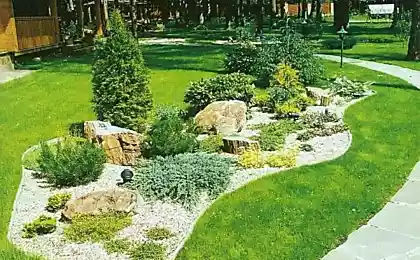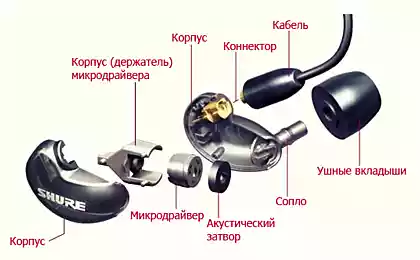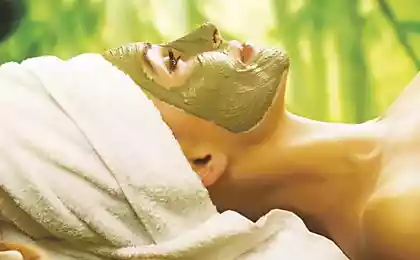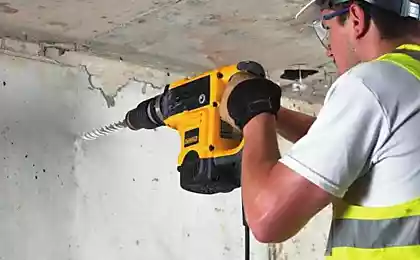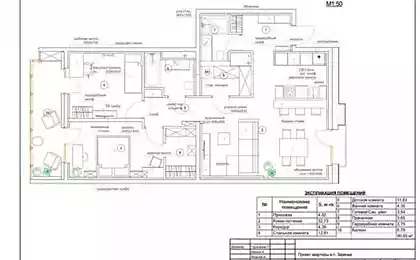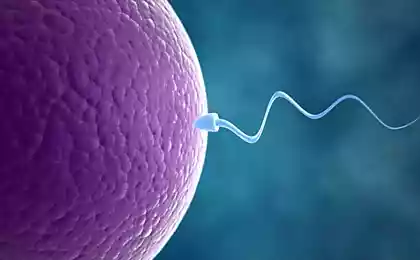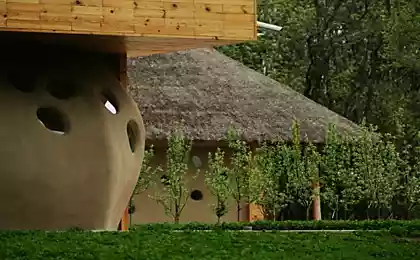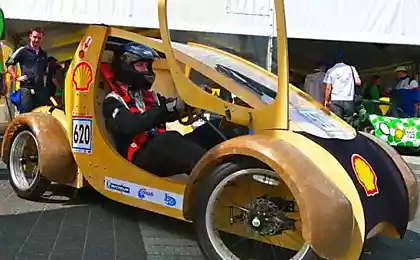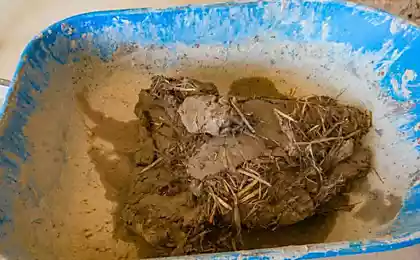644
Karmacharya — modern roof for ECO homes
Natural tiles made of clay can be considered the oldest of all known roofing materials. She's trustworthy, as for thousands of years is used to create a warm, safe roof. It has long been used in many States, especially in Europe. The material has an environmentally friendly composition, strength, noble appearance.

Despite the appearance on the market of inexpensive and high-quality products for roofing, modern roofing karmacharya for a private home and has not lost its popularity. Opt for the roofing of a private house on this material, you will find unique style of roof, the quality, warmth and comfort.
The method of production and composition of ceratocarpusWays of making this material now practically do not differ from those used in the middle ages. Yes, today, shingles are manufactured on high-quality equipment, but the material is all the same stages — preparation of homogeneous clay mass, the formation of the blanks, the addition of the dye, drying and firing at 1000 degrees.
To get quality tiles, you need to find special clay and carefully clean it from impurities. The less impurities and foreign inclusions, the lower the probability of formation of cavities and microposts in the tiles. And it is due to the high density and lack of internal voids, karmacharya withstand all the negative effects of temperature fluctuations, snow loads, rain.
The traditional reddish color of ceramic tiles due to the presence of iron compounds in the clay. Over the years, the material acquires a noble dark patina, which some manufacturers strive to make their products at the stage of production.
There are many options ceratocarpus of different colors. To impart the desired shade of the tile glaze or engobe. The frosting looks like a thin layer of glass, this glossy hard cover with nice color that can be absolutely anything depending on the pigment substances. After firing, the glaze becomes impervious to moisture, protecting the shingles from getting wet.
Ingibirovannoj coating is created by applying engobe to the surface of ceratocarpus. This composition is obtained by mixing clay with mineral components and dyes. Actually it's the same clay from which the tile itself is made. Therefore, the temperature compression and expansion of the engobe and roof tiles are absolutely the same, which makes the product very resistant to temperature changes. Unlike glazes, the engobe will not crack when the temperature changes.
The peculiarity of the installation of the roof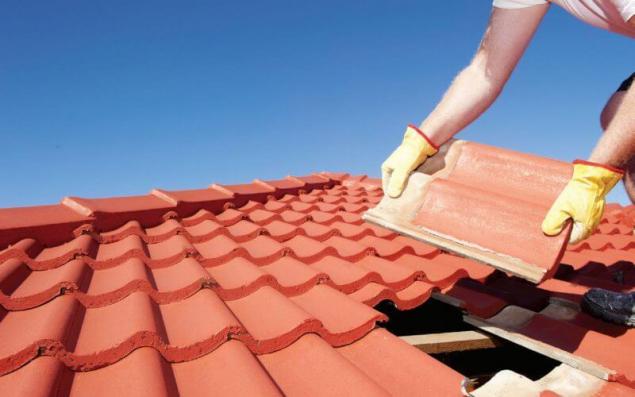
Karmacharya has grooves that can be formed not only on the side faces but also on the top and bottom faces. This groove creates a scarf joint when laying the tiles, as this provides the best protection from moisture and wind in the "roof pie." In the Russian regions with high rainfall such an embodiment of a roof is the most optimal.

Ceratocarpus are distinguishable product, which is generated by the coating is able to compensate for shifts of building structures that inevitably occur when shrinkage of the walls, in strong wind or "walking" of the Foundation.
The pros and cons of the materialan Important advantage is that the operation of the roof without repairs. Under normal conditions the material will last at least a century, which practically corresponds to the period of life of an ordinary house.
Thanks to karaokemedia in the house creates a good insulation and a comfortable climate. In the attic under the slate roof, very cozy and quiet, you can not be afraid of thunderstorms as karmacharya does not attract lightning. The rain drumming on the tiled roof, as if on metallographie.
Summer in the house with a tiled roof is cooler because the roof is not overheating due to sunlight. In winter, reduced heat loss, due to the low thermal conductivity of ceratocarpus.
A house with a roof of ceramic tiles will last longer, as this roofing material gives full protection from leaks. published
Source: www.diy.ru/post/8649/

Despite the appearance on the market of inexpensive and high-quality products for roofing, modern roofing karmacharya for a private home and has not lost its popularity. Opt for the roofing of a private house on this material, you will find unique style of roof, the quality, warmth and comfort.
The method of production and composition of ceratocarpusWays of making this material now practically do not differ from those used in the middle ages. Yes, today, shingles are manufactured on high-quality equipment, but the material is all the same stages — preparation of homogeneous clay mass, the formation of the blanks, the addition of the dye, drying and firing at 1000 degrees.
To get quality tiles, you need to find special clay and carefully clean it from impurities. The less impurities and foreign inclusions, the lower the probability of formation of cavities and microposts in the tiles. And it is due to the high density and lack of internal voids, karmacharya withstand all the negative effects of temperature fluctuations, snow loads, rain.
The traditional reddish color of ceramic tiles due to the presence of iron compounds in the clay. Over the years, the material acquires a noble dark patina, which some manufacturers strive to make their products at the stage of production.
There are many options ceratocarpus of different colors. To impart the desired shade of the tile glaze or engobe. The frosting looks like a thin layer of glass, this glossy hard cover with nice color that can be absolutely anything depending on the pigment substances. After firing, the glaze becomes impervious to moisture, protecting the shingles from getting wet.
Ingibirovannoj coating is created by applying engobe to the surface of ceratocarpus. This composition is obtained by mixing clay with mineral components and dyes. Actually it's the same clay from which the tile itself is made. Therefore, the temperature compression and expansion of the engobe and roof tiles are absolutely the same, which makes the product very resistant to temperature changes. Unlike glazes, the engobe will not crack when the temperature changes.
The peculiarity of the installation of the roof

Karmacharya has grooves that can be formed not only on the side faces but also on the top and bottom faces. This groove creates a scarf joint when laying the tiles, as this provides the best protection from moisture and wind in the "roof pie." In the Russian regions with high rainfall such an embodiment of a roof is the most optimal.

Ceratocarpus are distinguishable product, which is generated by the coating is able to compensate for shifts of building structures that inevitably occur when shrinkage of the walls, in strong wind or "walking" of the Foundation.
The pros and cons of the materialan Important advantage is that the operation of the roof without repairs. Under normal conditions the material will last at least a century, which practically corresponds to the period of life of an ordinary house.
Thanks to karaokemedia in the house creates a good insulation and a comfortable climate. In the attic under the slate roof, very cozy and quiet, you can not be afraid of thunderstorms as karmacharya does not attract lightning. The rain drumming on the tiled roof, as if on metallographie.
Summer in the house with a tiled roof is cooler because the roof is not overheating due to sunlight. In winter, reduced heat loss, due to the low thermal conductivity of ceratocarpus.
A house with a roof of ceramic tiles will last longer, as this roofing material gives full protection from leaks. published
Source: www.diy.ru/post/8649/

